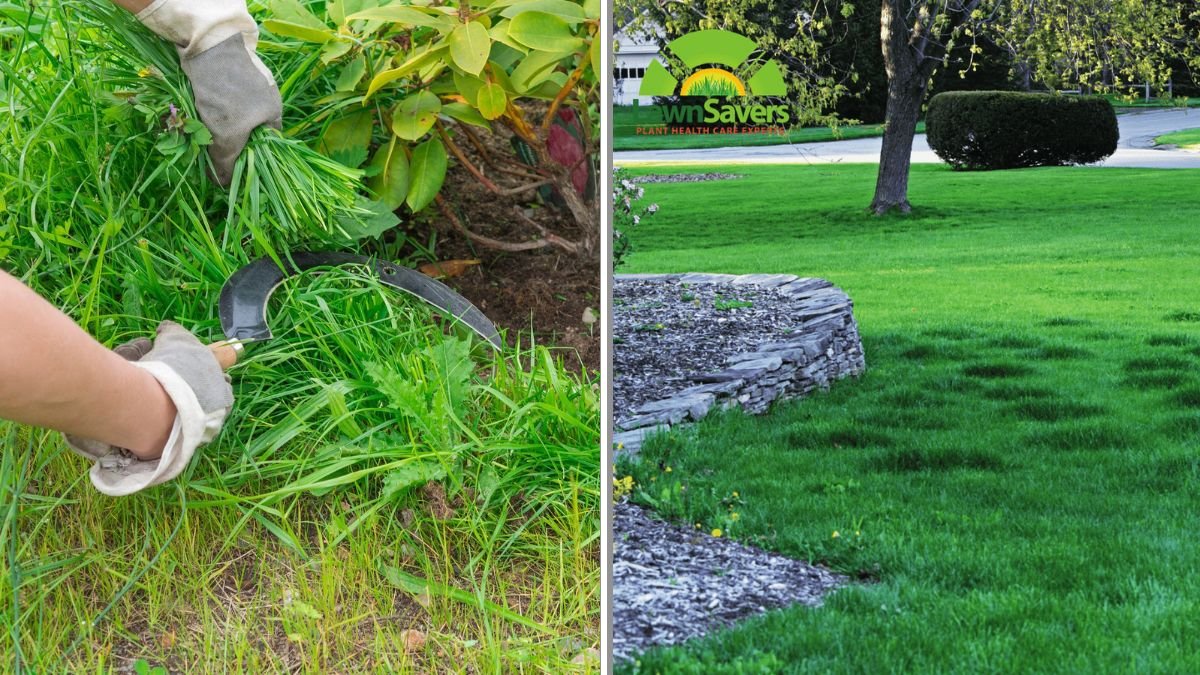A thin, patchy lawn can be frustrating to look at and even harder to maintain. Bare spots invite weeds, make soil prone to erosion, and diminish the overall beauty of your yard. While many people reach for quick chemical fixes, the truth is you can achieve a lush, full lawn naturally—without relying heavily on synthetic fertilizers or harsh treatments.
Here are nine natural methods to thicken sparse grass and create a healthier, more vibrant lawn.
1. Overseed Regularly
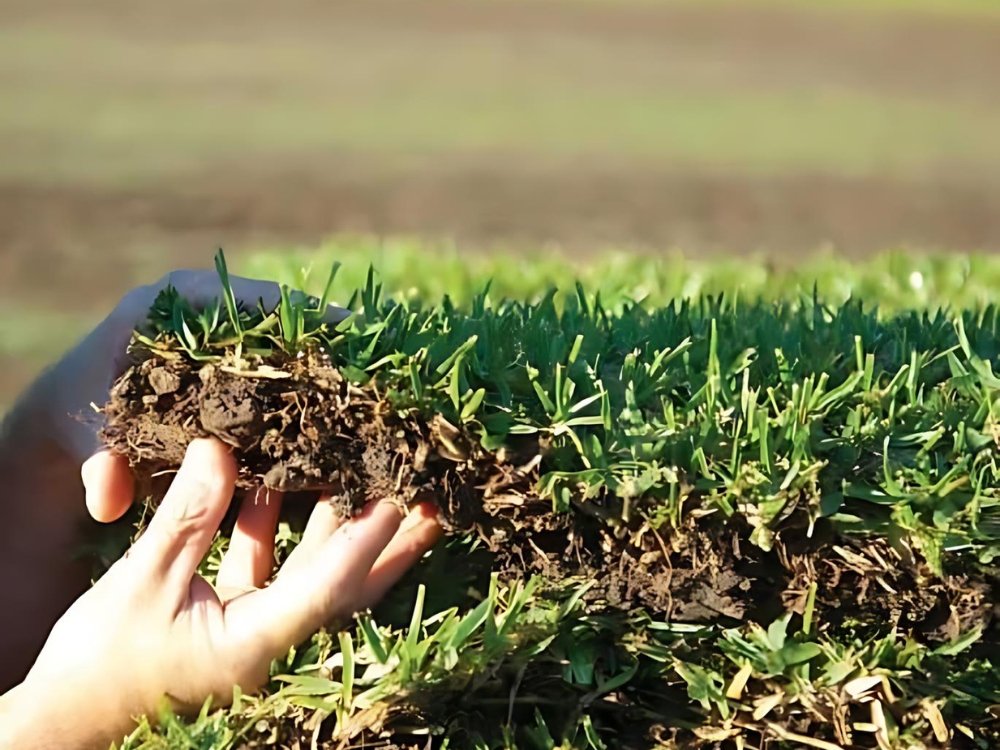
One of the simplest ways to improve sparse grass is overseeding—spreading new seed over existing turf.
- Choose the right grass type: Select a seed mix that suits your climate, soil, and sunlight conditions.
- Timing is key: Fall is ideal for cool-season grasses, while late spring or early summer works best for warm-season varieties.
- Soil preparation: Rake the lawn lightly to loosen soil before spreading seeds.
- Water consistently: Keep the soil moist until seedlings establish.
Why it works: Overseeding introduces new growth, fills in bare patches, and creates a denser turf naturally.
2. Improve Soil Health with Compost
Grass grows best in nutrient-rich soil, but many lawns suffer from compacted, nutrient-poor conditions. Adding compost revitalizes the soil naturally.
- Spread a thin layer (¼ to ½ inch) of compost over your lawn.
- Compost improves soil texture, boosts beneficial microbes, and increases water retention.
- Combine compost with aeration for deeper penetration.
Why it works: Healthy soil grows healthy grass—dense, green, and naturally resilient.
3. Aerate to Relieve Compaction
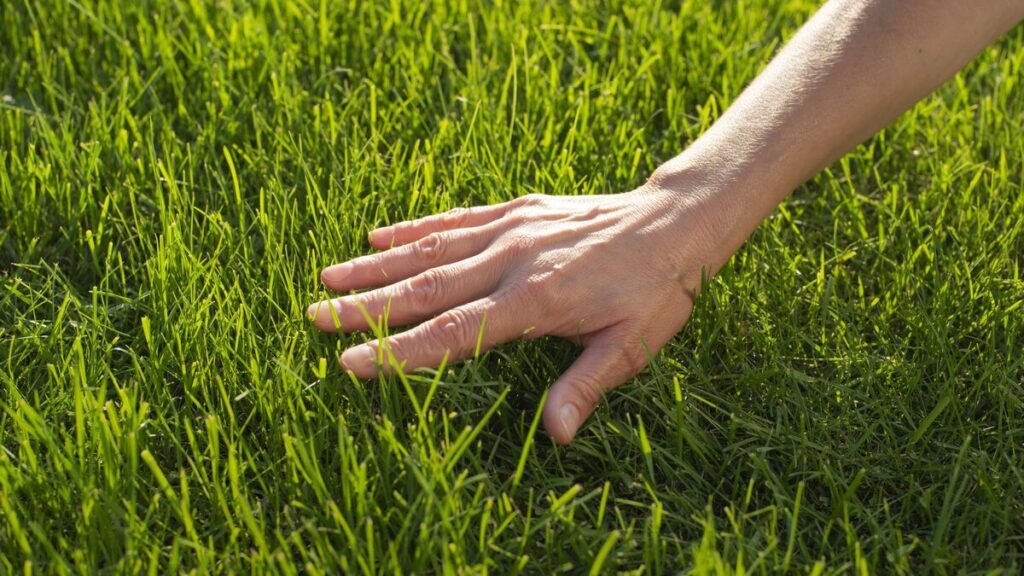
Compacted soil suffocates grass roots by limiting oxygen, water, and nutrient flow. Aeration loosens soil and encourages stronger growth.
- Use a core aerator to remove small plugs of soil.
- Focus on high-traffic areas where soil compacts easily.
- Follow aeration with overseeding and compost for best results.
Why it works: Roots spread more deeply in loosened soil, leading to thicker grass coverage.
4. Mow at the Right Height
Cutting grass too short weakens it, while mowing higher encourages deeper roots and thicker growth.
- Keep grass at 3–4 inches for most species.
- Never cut more than ⅓ of the blade in one mowing.
- Rotate mowing patterns to prevent soil ruts.
Why it works: Taller grass shades soil, reduces evaporation, and encourages density.
5. Water Deeply and Infrequently
Instead of frequent shallow watering, adopt a deep, less-frequent approach.
- Water 1–1.5 inches per week, ideally in one or two deep sessions.
- Early morning watering reduces evaporation.
- Adjust watering for soil type—sandy soils may need lighter, more frequent sessions.
Why it works: Deep watering trains roots to grow downward, making grass more resilient and lush.
6. Mulch Grass Clippings
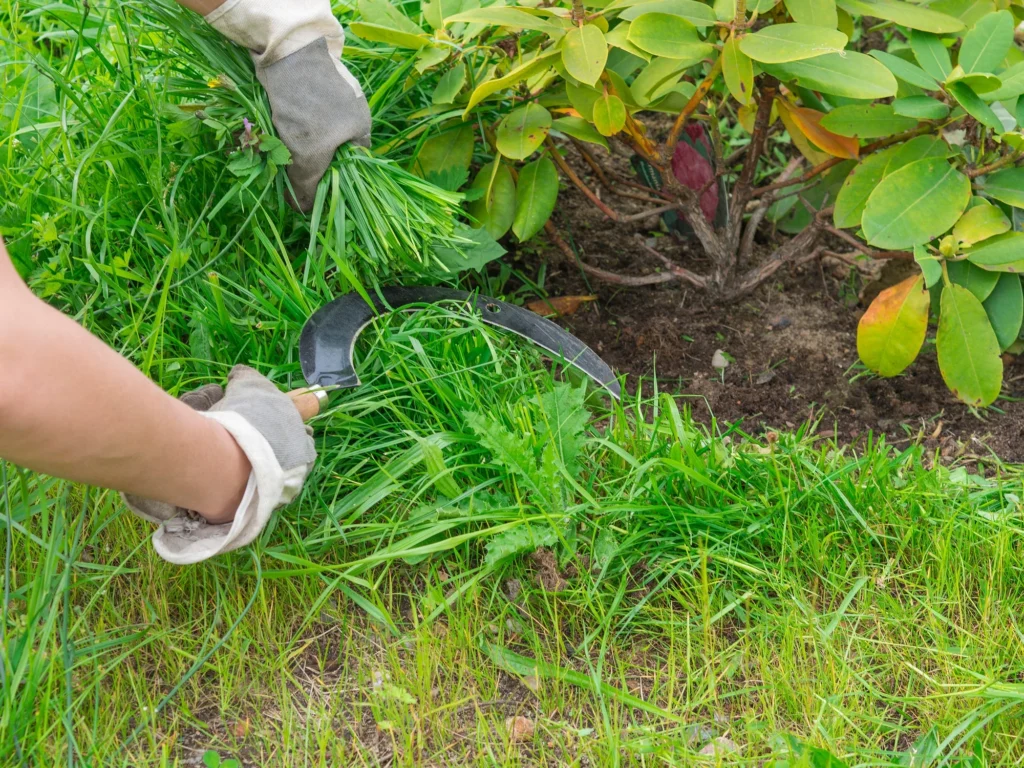
Instead of bagging clippings, let them return to the soil through mulching.
- Mulching provides free, natural fertilizer as clippings break down.
- It improves soil moisture retention.
- Modern mulching mowers finely chop clippings so they don’t smother grass.
Why it works: Recycling nutrients back into the soil promotes thicker growth naturally.
7. Balance Soil pH Naturally
If your soil is too acidic or alkaline, grass struggles to grow thick and healthy.
- Test your soil pH with a home kit or professional service.
- If acidic, add lime to raise pH.
- If alkaline, incorporate organic matter like compost or sulfur to balance.
Why it works: Grass absorbs nutrients most efficiently when soil pH is between 6.0–7.0.
8. Reduce Lawn Stress
Stress weakens grass, leaving it thin and patchy. Avoid practices that strain your lawn:
- Limit heavy foot traffic in vulnerable areas.
- Avoid overfertilizing, which can burn grass.
- Refrain from cutting grass during extreme heat or drought.
Why it works: Minimizing stress allows grass to grow naturally thicker and stronger.
9. Use Natural Fertilizers
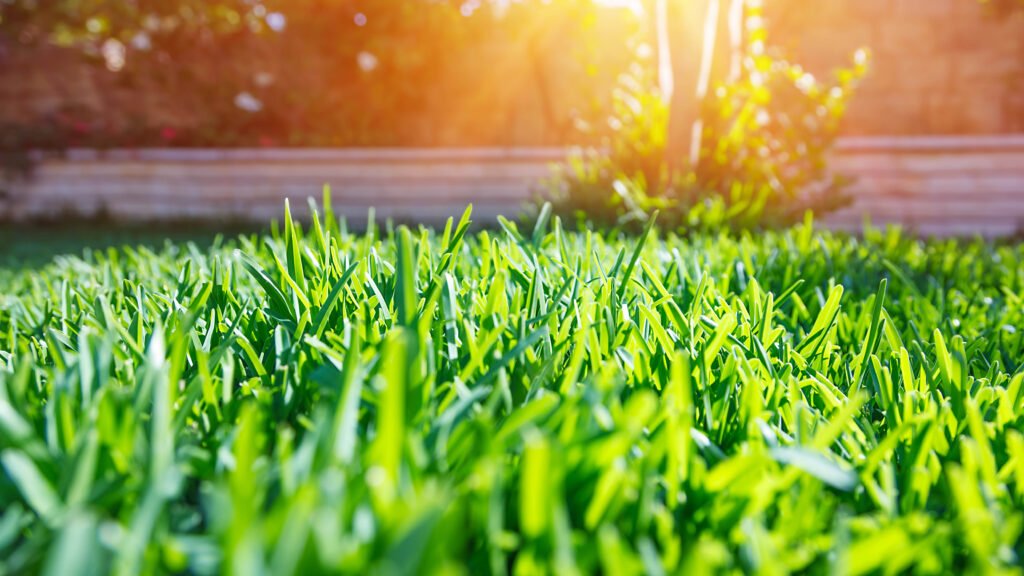
Instead of relying on synthetic fertilizers, opt for organic options:
- Compost, compost tea, and worm castings provide a balanced nutrient boost.
- Seaweed extracts and fish emulsion add trace minerals.
- Corn gluten meal doubles as a natural weed suppressant and fertilizer.
Why it works: Natural fertilizers improve soil structure and support long-term turf health without harsh chemicals.
Bonus Tip: Encourage Biodiversity
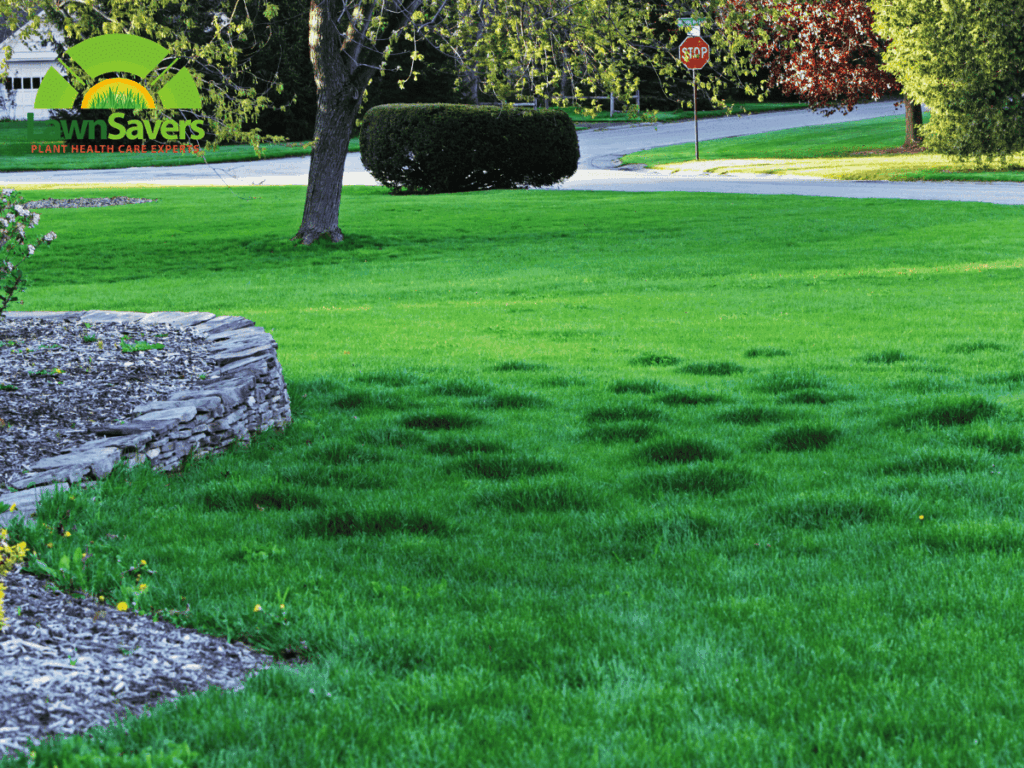
Sometimes the best way to achieve a thicker, healthier lawn is by embracing a mix of grasses and clover. Clover fixes nitrogen naturally, improving soil fertility and supporting turf density.
Final Thoughts
A sparse lawn doesn’t mean you’re doomed to endless weeds or chemical treatments. By overseeding, enriching soil with compost, aerating, mowing wisely, watering deeply, mulching clippings, balancing pH, reducing stress, and using natural fertilizers, you can transform thin grass into a thick, lush lawn—naturally.
These methods not only improve the look of your yard but also strengthen its ecosystem, making your lawn more resilient to pests, drought, and seasonal stress. The result? A greener, healthier, and more sustainable outdoor space you can enjoy year-round.
